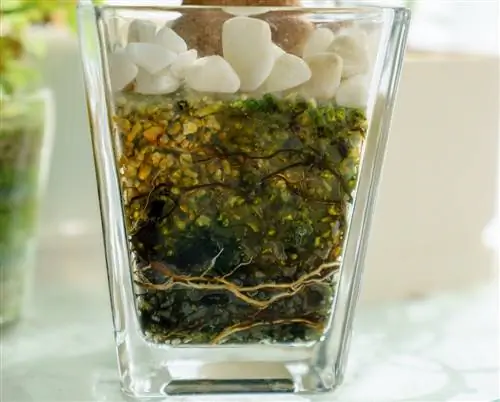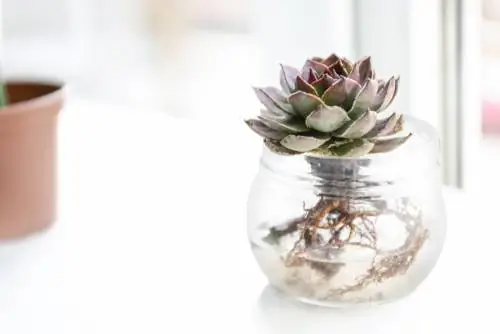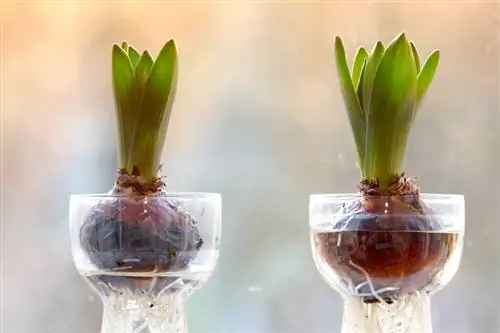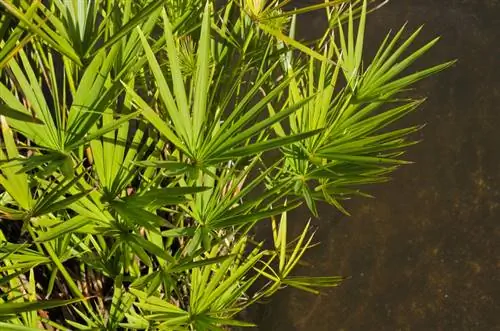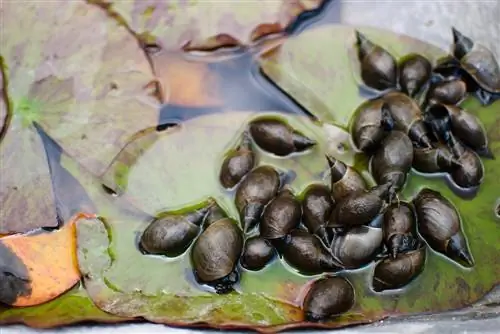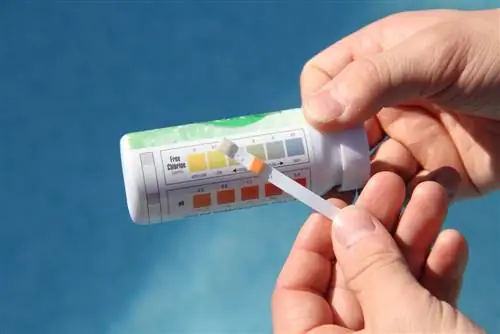- Author admin [email protected].
- Public 2023-12-16 16:46.
- Last modified 2025-01-23 11:22.
Algae can hardly be avoided, even in sterile hydroponics. They can seriously endanger plant growth under certain conditions. Find out here how algae gets into hydroponics, how you can fight it and effectively prevent it to protect your plants.

How do algae get into hydroponics?
Algae are spread vialong-lasting spores in the air, on clothing or on the body, among other things. This means that algae also comes into sterile hydroculture and can hardly be avoided. As soon as the spores come into contact with water, they grow.
Why is algae dangerous for hydroponics?
In small quantities, algae do not pose a danger. However, if they spread too much, it is very dangerous for hydroponics. Too many algae clog the pipe systems and pumps and cloud the water. The following serious problems occur:
- Lack of oxygen (Without daylight, algae rob all of the vital oxygen at night. In addition, a lot of oxygen is used up when dead algae decompose.)
- pH fluctuations (If algae consume carbon dioxide during the day, the pH value increases by 1-2 points. At night, carbon dioxide is produced, causing the pH value to fall again.)
How do you prevent algae in hydroponics?
Since algae cannot be avoided in hydroponics, you have to find a way to keep it under control:
- Protect water from sunlight: Use opaque or colored containers and pipes to reduce exposure to light. As a result, algae cannot carry out photosynthesis and their growth is hindered.
- Grapefruit extract: Is antibacterial and prevents the spread of algae. Use 1 to 3 drops per liter.
- UV-C light: Kills algae reliably, but is expensive. UV-C radiation is shorter-wave and more energetic than UV-A or UV-B radiation.
How to fight algae in hydroponics?
If there is strong algae growth, proceed as follows:
- The entire grow room must be thoroughly cleaned of algae spores.
- Drain the entire hydroponic setup to remove the algae nutrient solution.
- The entire system needs to be thoroughly cleaned. To do this, use a light hydrogen peroxide mixture (1ml hydrogen peroxide in 1l water). Soak the parts in it or run the cleaning solution through the entire system.
- After cleaning, you should rinse everything three times to remove the chemical residues.
- Dry everything thoroughly.
What should be taken into account when combating algae in hydroponics?
Commercialalgicidesshouldnot be used in a hydroponic plant setting as the roots can easily be severely damaged. In addition, algae quickly become resistant and then grow again.
Tip
Algae in hydroponics can also be useful
New research has found that certain types of algae (e.g. seaweed) can even promote plant growth. They contain important nutrients for cultivation and serve as fertilizer. Some types of algae are even antibacterial and can prevent illness. However, most algae are dangerous to hydroponics and should be removed once too much has formed in the system.

